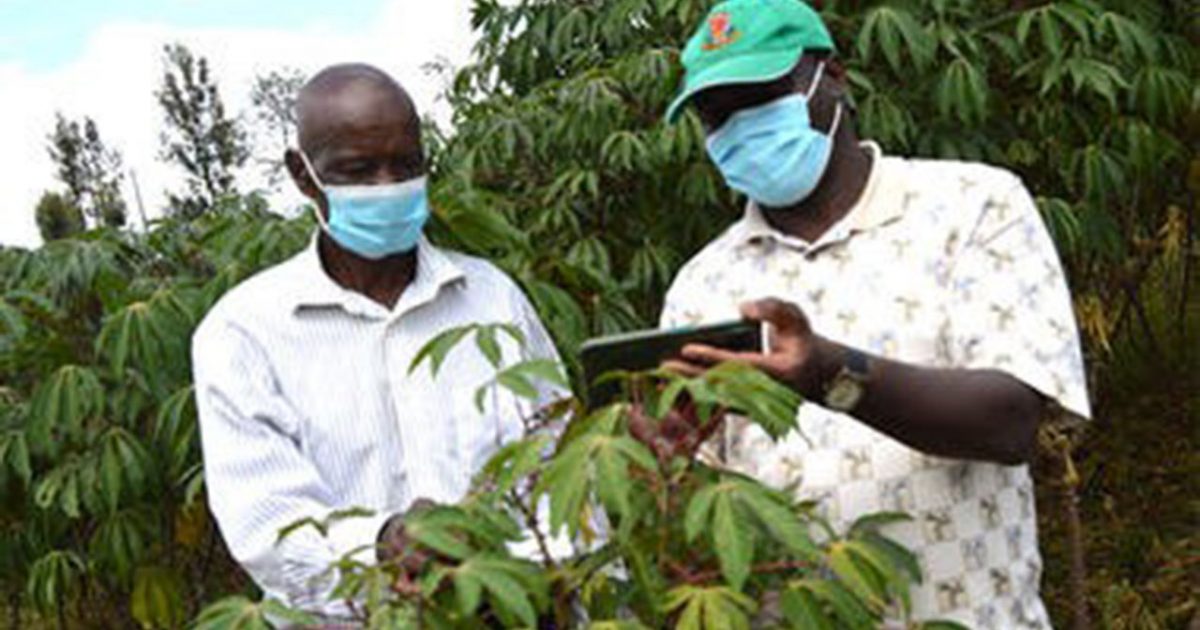Egerton University is seeking to boost value addition for cassava, which many rural households largely consume as subsistence food across the country.
According to Acting Deputy Vice-Chancellor in Charge of Administration, Planning, and Development Professor Richard Mulwa, cassava farming has a lot of potential in the coastal, Nyanza, western, and parts of the Rift Valley and Central regions, and value addition has the potential to improve food security and incomes in those areas.
He said that cassava had been considered a crop for the poor, but this is changing as more people embrace the value-added chain of the crop.
Through funding from the Regional Universities Forum for Capacity Building in Agriculture (RUFORUM) and the MasterCard Foundation, the university is working on a guidebook on cassava value addition that will build the capacity of smallholder farmers to produce cakes, crisps, fries, gari (breakfast cereal), and flour for making chapatti, among other products from the crop.
“Unlike many other tubers, cassava is highly perishable and stays fresh for only 48 hours. For many years, farmers had a unique way of handling this challenge—delaying the harvesting and, therefore, preserving them in the ground for as long as they did not need them for food or to sell. But this exposed the tubers to diseases, pests, and decay. However, with value addition and modern methods of preserving the produce, farmers’ fortunes are bound to change,” explained Prof. Mulwa.
He disclosed that the university had already completed a three-year programme funded by the Community Action Research Project (CARP+), RUFORUM, and the MasterCard Foundation that targeted to promote value addition, creating jobs, increasing food and nutrition security, and improving cassava quality, productivity, and marketability both locally and abroad.
Dubbed Cassava Value Chain Upgrading (CVCU) for secure food, nutrition, income, and resilience of smallholder farmers in the arid and semi-arid lands of Nakuru County, the project incorporated 6,000 smallholder farmers in Njoro, Lower Subukia, and Solai Sub Counties.
Prof. Mulwa, who was the Project’s Principal Investigator said rural communities in the targeted areas had benefited from the value-added chain training since the project engaged in market-oriented agriculture, where cassava growers were linked to industrial manufacturers.
He said through the venture, value chain training in production, processing, and marketing of cassava-based products, its breeding, as well as food science, had been incorporated into Technical and Vocational Education and Training (TVET) students, women, and youth groups, as well as farming groups.
“The guidebook we are working on is a collection of popular recipes developed using cassava and cassava-based products in Kenya. It is being compiled to create awareness about the diverse ways to process and consume cassava and the products derived from it. This is aimed at spurring new markets and overall demand for the crop,” Professor Mulwa explained.
According to Prof. Mulwa, the ultimate goal of the book, which he is co-authoring with Ms. Jane Abonyo, a nutritionist, is to improve food security, enhance the incomes of farmers and small-scale processors, and increase youth employment opportunities in rural and urban settings.
“Cassava has a huge unexploited potential as a raw material for a wide array of value-added products, from coarse flour to high-tech starch gels. Modified cassava starch can be used in the manufacture of alcohol, animal feeds, and baked products. In advanced technologies, the crop is an important base in the manufacture of plywood, paper, and textiles.
These are some of the industry players that we will be linking our cassava farmers with. We are also very keen on the quality of cassava raw material churned out by growers,” stated Prof. Mulwa.
According to the Acting Deputy Vice Chancellor, despite cassava’s capacity to withstand climate shocks, its production faces challenges, particularly from the destructive Cassava Brown Streak Disease (CBSD).
Prof. Mulwa said progress has been made in the fight against CBSD, including the identification of a Tanzanian variety of cassava that is resistant to the disease.
He revealed that five varieties have been identified that are best suited to the targeted regions in terms of yield, fast maturity, and low cyanide levels.
“We are now in the process of transferring the resistance genes of the Tanzanian variety to the locally adapted breeds using molecular marker-assisted techniques. These new varieties will be a gem to farmers once certified for bulking and distribution,” the principal investigator pointed out.
He said cassava is central in terms of food security and is also in high demand among beer makers because of its starch ingredient, while value addition will ensure farmers put food on the table and make money by selling the products.
“In the past, East Africa Breweries Limited (EABL) has been one of our major industrial partners in cassava projects. Jointly with EABL, we have been exploring the possibilities of brewing high-quality beer from cassava. Kenyans should embrace cassava production. Apart from being consumed as food, the same is also a much sought-after raw material for the production of many other industrial products,” added the professor.
He indicated that to make the initiative a success story, the university is breeding varieties that are resistant to cassava mosaic disease and cassava brown streak disease that will be distributed to women and youth groups.
The conventional cassava takes 10 years to breed (research and trials before bulk distribution to farmers for planting), but the scientist hopes the new variety will take half the time.
“We have developed 29 cassava varieties, out of which 7 varieties mature within six months. Egerton University’s Food Science Department has been mainstreamed to work with farmers, particularly women and youth groups, in value addition. The department is working on an animal feed formula that incorporates Acacia pods, the infamous Mathenge (Prosopis Juliflora) weed, with cassava as a base. This skill will later be transferred to farmers.”
The university has also established nine cassava variety sites in the three sub-counties of Njoro, Lower Subukia, and Solai.
Against the background of a ban on plastic bags, Professor Mulwa rooted for the production of biodegradable packaging materials from cassava. Professor Mulwa said ongoing research has established that cassava can be transformed into a biodegradable green paper that is not only environment-friendly but also enables food to be stored for a long time.
“Use of cassava to produce biodegradable paper bags will not only ensure environmental protection but also steer agriculture from low-productivity enterprises to high-productivity commercial production. We are in the process of engaging key industrial players towards achieving this objective. The technology is being deployed in Indonesia, where sustainable packaging materials are made from cassava. These packaging materials are 100 per cent natural, biodegradable, sustainable, compostable and recyclable,” stated the don, who also lectures at the university’s Department of Crops, Horticulture, and Soils.
Kenya has 200,000 hectares (494,210 acres) of cassava. About 60 per cent of the crop is in the Western Coast, including Kwale, Lamu, Kilifi, and Tana River – 30 per cent, while the rest is in parts of Rift Valley and Central.
The don said various initiatives by the university and its partners are seeking to increase average production for subsistence farmers from 2.5 metric tonnes per acre to 7 metric tonnes, and for pre-commercial farmers from 5 metric tonnes to 10 metric tonnes per acre.
“Cassava has a high production per hectare and does well in drought conditions. It can help the country ease pressure on maize.
We are working overtime to ensure that the tuber is adapted by farmers from regions across the country, which have primarily concentrated on maize and wheat farming for a living, so as to promote mixed farming. These areas have also experienced acute attacks by army worms, which leads to low yields during the harvest season.
Cassava’s higher tolerance threshold to a variety of stresses, such as water and heat, water salinity, and the emergence of new pests, holds the key to addressing sustainable food and nutrition security. It will strengthen resilience to climate change, create employment opportunities, and increase incomes for smallholder farmers,” said the Acting Deputy Vice Chancellor.
By Anne Mwale





